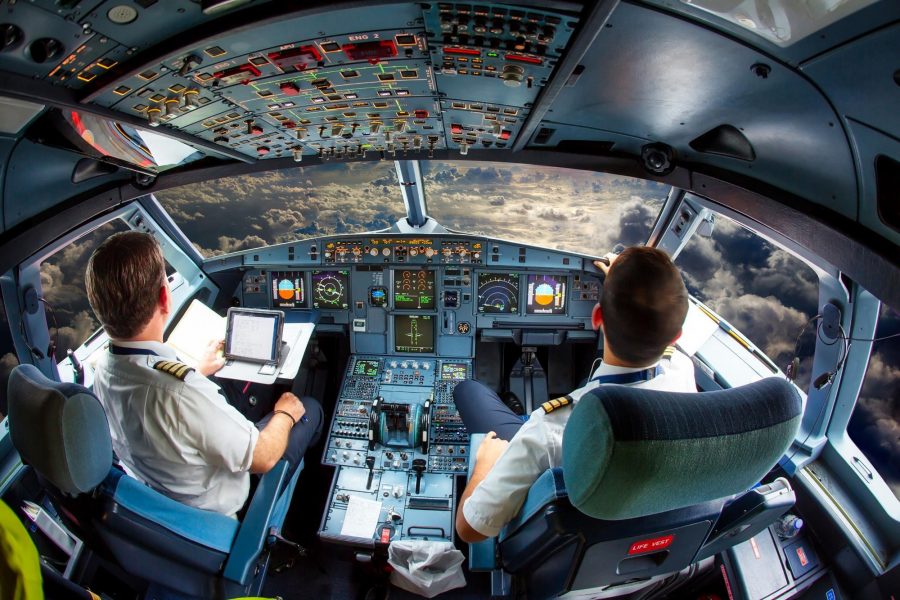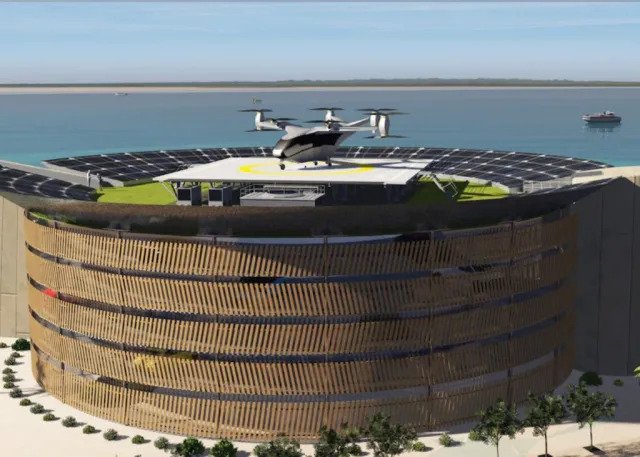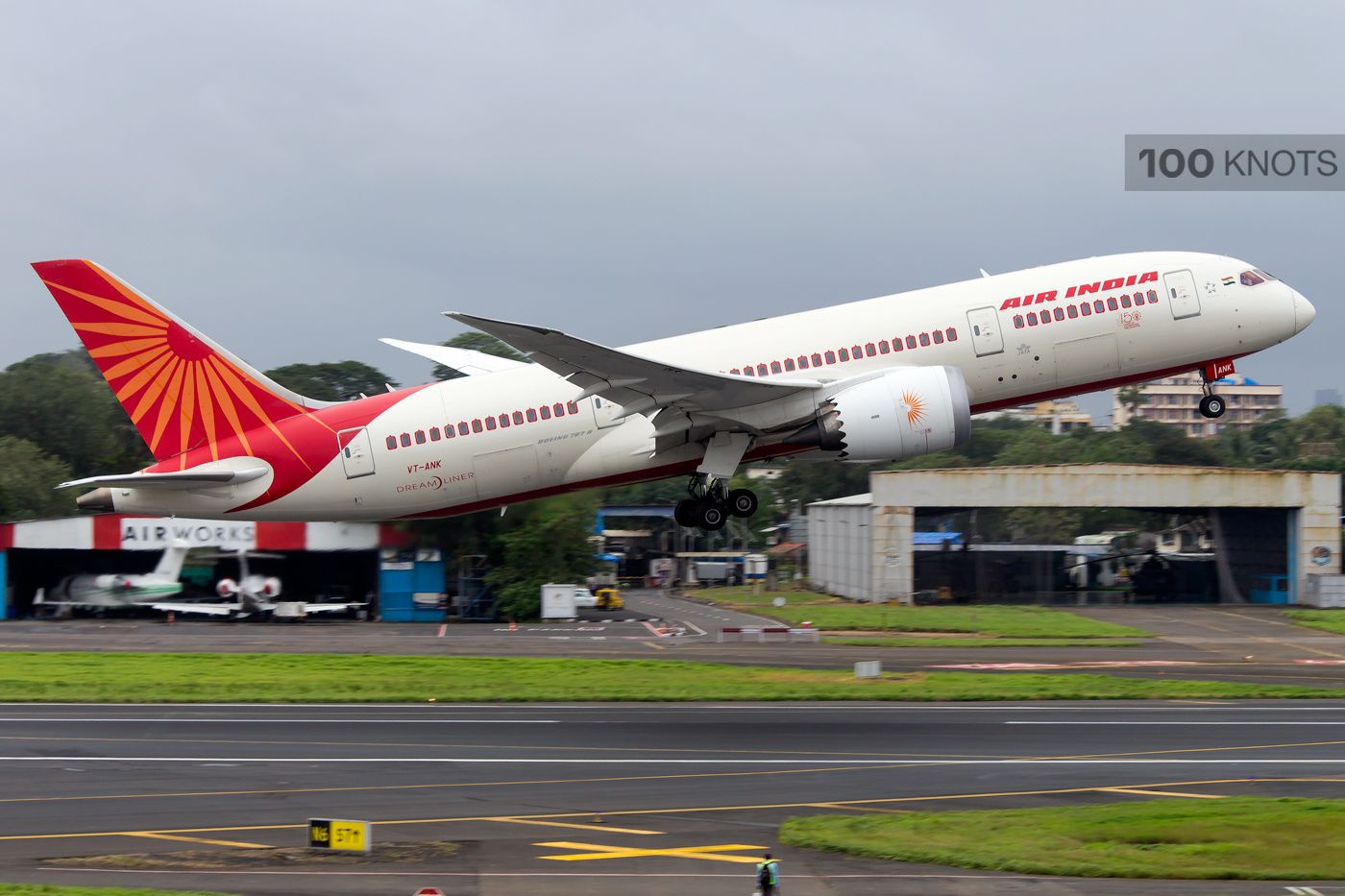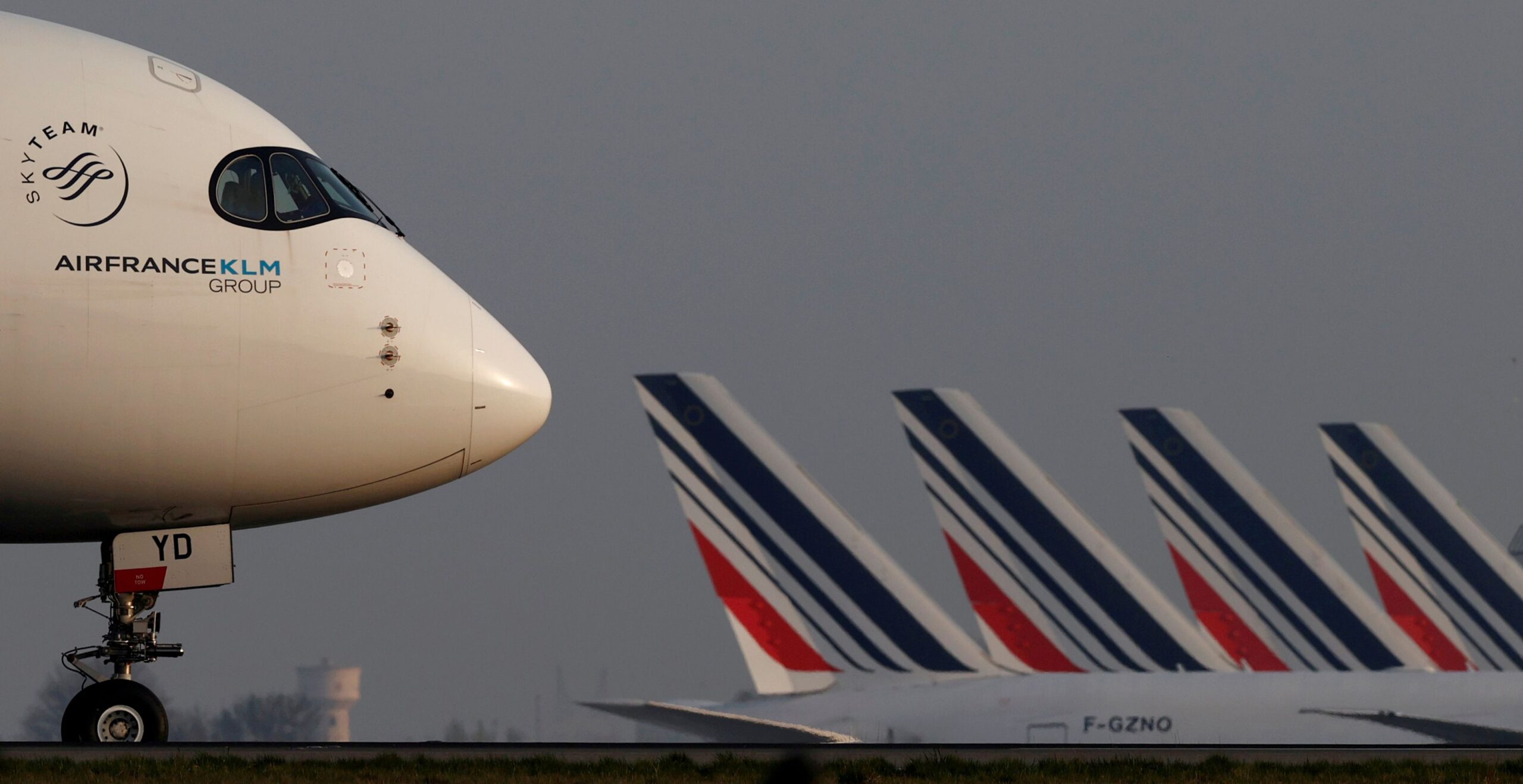The govt. is refusing to allow any non-metro airport as a new “point of call” for passenger operations, given the enormous imbalance in favour of these carriers.
The minister of state for civil aviation, V K Singh, stated in a written response that the government has a policy of encouraging expanded international operations by Indian carriers from non-metro points, either directly or through their own domestic and international operations.
The minister added that under the terms of bilateral air services agreements reached by India with other nations, Indian-authorised carriers are permitted to mount scheduled operations to/from any airport to international locations.
Indian-authorised carriers are permitted to mount scheduled operations to/from any airport to international locations
According to him, air services agreements are bilateral in nature and reciprocity is upheld in such contracts. He also said that in the past, because multiple points of call were granted to foreign nations, an imbalance was created whereby foreign carriers had access to various points in India while Indian carriers only have access to one or two points.
Accordingly, the government has taken note of the effects of giving foreign carriers unrestricted access to Indian airports on the domestic aviation ecosystem and has made the deliberate decision to not grant any non-metro airport as a new point of call to any foreign carrier for operating passenger services. This is in the interest of the Indian aviation ecosystem, the minister said.
Jyotiraditya M. Scindia, the minister of civil aviation, stated in the Lok Sabha on December 8 that Coimbatore has been designated as a "point of call" for Sharjah, Dubai, Singapore, Sri Lanka, the United Kingdom, and the United States.
Coimbatore Airport has been designated as a "point of call" for Sharjah, Dubai, Singapore, Sri Lanka, the United Kingdom, and the United States.
In response to a query from Pollachi MP K. Shanmugasundaram, who brought up the issue of Coimbatore International Airport's poor international connectivity, Mr Scindia stated that at the moment, Coimbatore airport has connectivity to Singapore and Sharjah on 10 and 14 weekly frequencies, respectively.
The designated carriers of Singapore, Sri Lanka, Dubai, Sharjah, the U.K., and the U.S. can already use Coimbatore as a point of call.
The Central government now does not permit any non-metro airport as a new point of call to any foreign carrier due to the considerable imbalance in the number of points of call in favour of foreign carriers.
Last year in November, Retd Gen V.K. Singh asked whether the government will review the then bilateral policy facilitating foreign airlines to Kannur International Airport in Kerala. The airport was commissioned in December 2018.
Kannur International Airport was commissioned in December 2018
Also read: Foreign carriers will not be granted new Non-Metro Airport slots
The ministry was asked by the Kerala government to allow international airlines to use the Kannur airport. Additionally, the state administration pushed for the airport to be included in the Association of Southeast Asian Nations (ASEAN) Open Sky Policy.
The Junior Aviation Minister added that there was intense public pressure to resume regular international flights.
A similar situation has emerged this year. In the past, because multiple “points of call” were granted to foreign nations, an imbalance was created whereby foreign carriers had access to various points in India while Indian airlines only had access to one or two points.
(With inputs from The Hindu)
Read next
Tata Group-owned Air India is close to finalising a deal with US aircraft maker Boeing for 50 narrow-body Boeing 737 MAX planes for its international budget arm Air India Express, according to sources.
The sources familiar with the development said the deal will be part of a large aircraft order that Air India has been discussing with Boeing Co and Airbus SE since the beginning of this fiscal. Loss-making Air India, which was taken over by the Tata group in January this year, plans to triple its fleet over the next five years.
As part of consolidating its airline business, the Tata group has also announced the merger of its domestic budget arm AirAsia India, which operates the Airbus A320 fleet, with Air India Express. Currently, Air India Express has 24 Boeing 737 planes in its fleet.
The sources said that a meeting between Air India and Boeing officials is also likely to take place to further discuss the aircraft deal. "Air India has almost finalised the deal with Boeing to acquire 50 Boeing 737 MAX planes for Air India Express," one of the sources said.
Air India declined to comment. According to the sources, Air India has been discussing this deal with Boeing for quite some time now and these aircraft were earlier to be delivered to China. The airline is expecting to get a significant discount for these planes, they added.
In the wake of the coronavirus pandemic and the rising number of cases in China, Chinese authorities have put in place various curbs, including on travel, as a result of which many of the country's carriers are going slow on their fleet expansion.
Last month, Air India Managing Director and Chief Executive Officer Campbell Wilson said the airline is in discussions with Boeing, Airbus and engine manufacturers for a "historic" order of next-generation aircraft. On December 11, media reports said that Air India was close to placing an order for some 500 planes with Boeing and Airbus.
An Air India official said the discussions for the large aircraft order are still in progress and the quantum of the order has not been decided yet. The order for new planes by Air India is likely to be announced in the coming weeks, the official added.
On December 8, Air India announced plans to refurbish its legacy wide-body fleet, comprising 40 Boeing planes, at an investment of over USD 400 million (about INR 3,295 crore). The company has mandated London-based product design companies JPA Design and Trendworks to assist with the cabin interior design elements of the refurbishment exercise.
Read next
DGCA issues the highest number of Commercial Pilot Licenses in 2022 in the last decade
Radhika Bansal
13 Dec 2022

Aviation regulator DGCA issued 1,081 commercial pilot licenses in 2022, which is the highest for any year in the last decade, according to official data. The record issuance of Commercial Pilot Licenses (CPLs) also comes at a time when the country's civil aviation sector is recovering at a fast pace after being hit by the coronavirus pandemic and the domestic air traffic is inching towards the pre-pandemic level.
A senior official at the Directorate General of Civil Aviation (DGCA) told PTI that 1,081 CPLs have been issued in 2022 till December 6 and the number is likely to cross 1,100 by the year-end. This is also the highest for any year since 2011, as per the data. In 2014, the number of CPLs issued stood at 896 while the count was at 862 in 2021.
ALSO READ - Covid wreaked havoc on the airline industry, but not on pilots’ dreams as most CPL issued this year
DGCA issues the highest number of Commercial Pilot Licenses in 2022 in the last decade
In 2015, the CPLs issued declined to 394 and rose to 537 in 2016. Further, it increased to 552 in 2017 and 640 in 2018. The data showed that in 2019, the number of CPLs touched 744 before declining to 578 in 2020. The count of CPLs issued stood at 823, 654 and 591 in 2011, 2012 and 2013, respectively.
An individual is eligible to apply for CPL after completing at least 200 hours of flying and fulfilling other conditions. Besides, the individual has to clear theory papers and once successful, the CPL is given for five years subject to complying with various requirements.
ALSO READ - India requires 1,000+ pilots per year but training facilities lacking
An increase in the number of Flying Training Organisations (FTOs) and most of them working on two shifts are helping pilot aspirants to clock more flying hours. Also, the license application process is online through the regulator's eGCA platform, the official said.
Currently, there are around 240 planes for training activities at various flying training organisations.
DGCA issues three types of licenses -- CPL, Air Transport Pilot License (ATPL) and Private Pilot License (PPL). While CPL allows a pilot to start flying as a co-pilot, ATPL permits a pilot to be the commander. PPL is issued for operating private planes.
According to the data from the DGCA, as many as 657 ATPLs have been issued this year till December 6. There are 34 flying training organisations in the country. Currently, there are around 240 planes for training activities at various flying training organisations. Mostly two and four-seater Cessna aircraft are used for flying training activities. The training of a pilot, including flying training, before he or she applies for the CPL is estimated to cost up to INR 50 lakh.
DGCA has issued more than 25,000 pilot licenses till now and there are estimated to be 11,000 to 12,000 active pilots. Out of them, 9,000 to 10,000 pilots are operating commercial planes.
As airlines look to increase capacity, they are starting to invest in pilot development programs.
As airlines look to increase capacity, they are starting to invest in pilot development programs. Nearly all major airlines now offer Cadet Programs, including IndiGo, SpiceJet, Air India, and others, which opens the door to securing loans as well. Indeed, a shortage of pilots can be a huge issue for airlines, grounding planes and forcing them to seek foreign talent at much higher costs.
The uptick in licenses tracks with the growth in India's active commercial fleet. With new players like Akasa joining the market and Air India investing hundreds of millions into new planes, pilots will be in high demand, along with other technical crew members.
On December 10, domestic airlines carried more than 4.14 lakh passengers, as per the latest data from the civil aviation ministry. Also, airlines, including the newly-launched Akasa Air, are expanding their operations amid rising travel demand.
ALSO READ - Indian aviation sector to employ 1 lakh people directly in the next 2 years
Read next
Airnova, a vertiport firm based in Bordeaux, France, has launched a €3 million (US$3.2 million) funding effort in order to create what might be the first vertiport network connecting all of France's major cities. The company's creator has already invested €500,000 (US$527,000) in the concept and is currently in talks with angel investors and investment firms about additional funding.
In 2020, Airnova created a unique vertiport design which was then approved for the French territory in April 2022 by INPI, the French institute for intellectual property rights. An extension to the rest of Europe is currently under approval- said Laurent Mathiolon, CEO and founder of Airnova
Mathiolon, who has a civil engineering degree, has managed construction, real estate, and land development projects for over 35 years through his other company Aqprim.
Airnova's vertiports are built for multi-modal operations such as freight and last-mile delivery, passenger transport, and civil security activities including firefighting and air ambulance.
Each of Airnova's urban vertiports will feature two landing pads and two parking stations for logistics operations and rapid battery charging, occupying a 1,000-square-meter footprint (10,700 square feet).
airnova
The vertiports will be built to give eVTOL aircraft access to a range of power sources, such as electric charging stations or, when the technology becomes available, hydrogen charging stations. Backup batteries can be deployed near parking lots as well.
The landing surfaces, according to Mathiolon, are meant to accommodate aircraft weighing up to eight tons, and a modest elevation is intended to improve eVTOL landing performance by decreasing venturi and ground effects. According to him, this structure will also allow for simpler access to the underside of the eVTOLs for logistics and battery repair operations. Airnova worked with eVTOL firms including Volocopter and Airbus, as well as various helicopter operators, to create its vertiport design.
AI and robots will be at the forefront of operations
At each Airnova peak, a tiny control tower staffed by qualified workers will be constructed, and a set of artificial intelligence (AI)-assisted cameras will support drone sky controllers in monitoring each aircraft's landing and takeoff.
airnova
Airnova is currently working on eVTOL passenger screening systems with the French company Dassault Systèmes. The vertiport will also use automation to manage passenger boarding, such as validating tickets and granting passengers access to the boarding area. A supervisor will validate each step remotely.
To assure safety, advanced technology like as facial recognition, light detection and ranging (LiDAR), 3D screening, and artificial intelligence (AI) will be deployed. said Mathiolon.
Airnova proposes to develop vertiginous ground infrastructure dubbed VertiStations, ideally outside of cities and near logistics centers, in addition to three major types of vertiport designs.
Getting started
Airnova intends to construct peaks as early as 2023, with an initial focus on France's main cities like Bordeaux, Nantes, and Toulouse.
Mathiolon said a one-way trip from Bordeaux to Toulouse, which might take about two hours by train or three hours by car at peak times, would now be completed in less than an hour by eVTOL.
A mayor and other local authorities in the Paris area have urged Airnova to create eVTOL vertiports for the 2024 Olympic Games.
SOURCE : airnova.immo | verticalmag
COVER : airnova
Read next
Air India is close to placing landmark orders for as many as 500 jetliners worth tens of billions of dollars from both Airbus and Boeing as it carves out an ambitious renaissance under the Tata Group conglomerate, industry sources said on Sunday.
The orders include as many as 400 narrow-body jets and 100 or more wide-bodies, including dozens of Airbus A350s and Boeing 787s and 777s, they said, speaking on condition of anonymity as finishing touches are placed on the mammoth deal in coming days.
Such a deal could top $100 billion dollars at list prices, including any options, and rank among the biggest by a single airline in volume terms, overshadowing a combined order for 460 Airbus and Boeing jets from American Airlines over a decade ago.
Even after significant expected discounts, the deal would be worth tens of billions of dollars and cap a volatile year for plane giants whose jets are again in demand after the pandemic, but who face mounting industrial and environmental pressures.
It would also allow Airbus to secure a home for some A350 production slots initially earmarked for Russia's Aeroflot and now left open because of war-related sanctions against Moscow.
Airbus and Boeing declined to comment. Tata Group-owned Air India did not respond to a request for comment.
China last week delivered its first C919 jetliner but is at least a decade away from competing on such a scale, experts say.
The potential blockbuster order comes days after Tata announced the merger of Air India with Vistara, a joint-venture with Singapore Airlines, to create a bigger full-service carrier and strengthen its presence in domestic and international skies.
That deal gives Tata a fleet of 218 aircraft, cementing Air India as the country's largest international carrier and second largest in the domestic market after leader IndiGo.
Buying debt-ridden Air India has also given Tata access to valuable flying rights and landing slots, especially to destinations in the United States and Europe.
HURDLES TO GROWTH
Air India's maharajah mascot was once synonymous with lavishly decorated planes and stellar service but its reputation declined in the mid-2000s as financial troubles mounted.
Founded by JRD Tata in 1932, Air India was nationalised in 1953. Tata regained control in January and has since been working to revive its reputation as a world-class airline.
The order reflects a strategy to re-capture a solid share of trips between India's large overseas diaspora and cities such as Delhi and Mumbai, dominated by foreign rivals such as Emirates.
Air India also wants to win a bigger share of regional international traffic and the domestic market, setting up a battle on both fronts with IndiGo.
Delivered over the next decade, the 500 jets would replace and expand fleets in the world's fastest-growing air travel market, while contributing to Prime Minister Narendra Modi's goal of expanding the economy to $5 trillion.
But experts warn many hurdles stand in the way of Air India's ambition to recover a strong global position, including frail domestic infrastructure, pilot shortages and the threat of tough competition with established Gulf and other carriers.
It may also struggle to get the medium-haul Airbus A321neos being ordered for the Air India-Vistara tie-up as quickly as it would like, with the European planemaker sold out until 2028 or beyond.
One industry source said new Boeing 737 MAXs will most likely go to Air India Express, the company's budget operator which could be renamed.
Insiders say plane and engine makers have been clamouring at Air India's door for months, with new Chief Executive Campbell Wilson refusing to rush the make-or-break fleet decision.
Reuters reported in July that Air India was taking more time to study Airbus A350s and Boeing wide-body 787 and 777 models, on top of a probable mixed order for smaller single-aisle jets.
Last month, Campbell confirmed talks to "greatly expand" Air India's fleet over the next five years and said, "At the risk of gross understatement, the investment will be substantial."
(With Inputs from Reuters)
Read next
To reduce the greenhouse gas emissions causing climate change, France will ban commercial flights on several short-haul domestic routes. France is the first country to ban short flights, which is especially bad for the environment because airplanes burn more fuel during takeoff and landing.
“I am proud that France is a pioneer in this area,” said Transport Minister Clément Beaune. He described the new policy as a “major step forward.”
The policy will enter into force in several months and will last for an initial period of three years; a review to consider extending it will begin after two years. It was adopted on the recommendation of a citizens' assembly charged with coming up with proposals to reduce emissions that were created as part of France’s 2021 law to address climate change.
France bans short-haul domestic flights to cut carbon emissions
The committee recommended banning flights between cities connected by rail lines if the train journey takes less than two and a half hours. France has a highly developed high-speed rail system. Its TGV trains, which started service in 1981, were the first high-speed trains on the European continent. They travel up to 187 mph, a speed that no train service in the United States can match.
The EU noted that flights on three more air routes in France could be barred if rail services improve. Charles de Gaulle to Lyon and Rennes, and Lyon to Marseille currently offer competitive high-speed rail services but have not been suspended due to limited schedules and trip times that are not always under 2.5 hours.
Last year, during the U.N. Climate Change Conference in Glasgow, Scotland, the U.S. Department of Transportation issued an Aviation Climate Action Plan to achieve net-zero emissions in the aviation industry by 2050. It proposed researching new technologies such as lower-emissions fuels and other ways of improving fuel efficiency.
Globally, air travel accounts for 2.5% of carbon dioxide emissions.
Globally, air travel accounts for 2.5% of carbon dioxide emissions. Rail transportation is comparatively much more energy-efficient and eco-friendly. In 2016, the most recent year for which data is available, rail accounted for just 0.3% of total energy consumption in the European Union, while air travel was responsible for 2.2%. This is not because Europeans travel nine times as much by air: In 2019, rail travel accounted for about 72% as many passenger kilometres travelled in the EU as airplanes did. According to the Community of European Railway, trains — thanks to being mostly electrified — carry 13% of goods and 7% of passengers while accounting for just 2% of the EU’s energy consumption for transportation.
The three major air routes that will be banned are between Paris’s Orly airport and the French cities of Lyon, Nantes and Bordeaux. According to Euronews, a Lyon-based television network, more routes could be added to the ban, such as flights between Lyon and Marseille, if train service between those cities expands. (Train service has to meet requirements such as the ability to arrive in the early morning and late evening, in addition to the duration limit.)
In 2016, the most recent year for which data is available, rail accounted for just 0.3% of total energy consumption in the European Union, while air travel was responsible for 2.2%.
In a decision late last week, the European Commission — the executive branch of the European Union — gave its approval to the law, which had been challenged by French airports and airline lobbyists.
When the law was passed in 2021, some members of the French Parliament opposed it, arguing that it would have a detrimental impact on the airline industry — which was still struggling because of COVID-19 — and by extension the national economy. One Socialist member of Parliament denounced the flight ban for having “disproportionate human cost” and predicted that it would contribute to higher unemployment.
The airline pilots' union said it was “quite disappointed” by the government’s action, and it argued that such measures would harm French airlines’ competitiveness unless they were undertaken in conjunction with other countries placing the same restrictions on their domestic flights.
France has the highest number of private jets of any country in Europe.
Leaders of France’s Green Party argued that the policy doesn’t go far enough. Karima Delli, a French Green member of the European Parliament, called the European Commission’s decision a “victory,” but added that “the threshold must be raised to four hours, and above all, include private jets in the ban.”
A spokesperson for the French government told Euronews that it does not plan to ban private jets under the climate law. But it does intend to produce a plan that would reduce private jet usage through a mixture of taxation and other regulations. France has the highest number of private jets of any country in Europe.
A 2021 report from Transport and Environment, a European clean transportation advocacy group, found that private jets pollute up to 14 times as much as commercial flights, and 50 times more than trains, per passenger mile, travelled.
Thomas Gelin, Greenpeace’s EU climate campaigner, said France’s short-haul commercial flight ban is “a baby step, but it’s one in the right direction.”






Comment